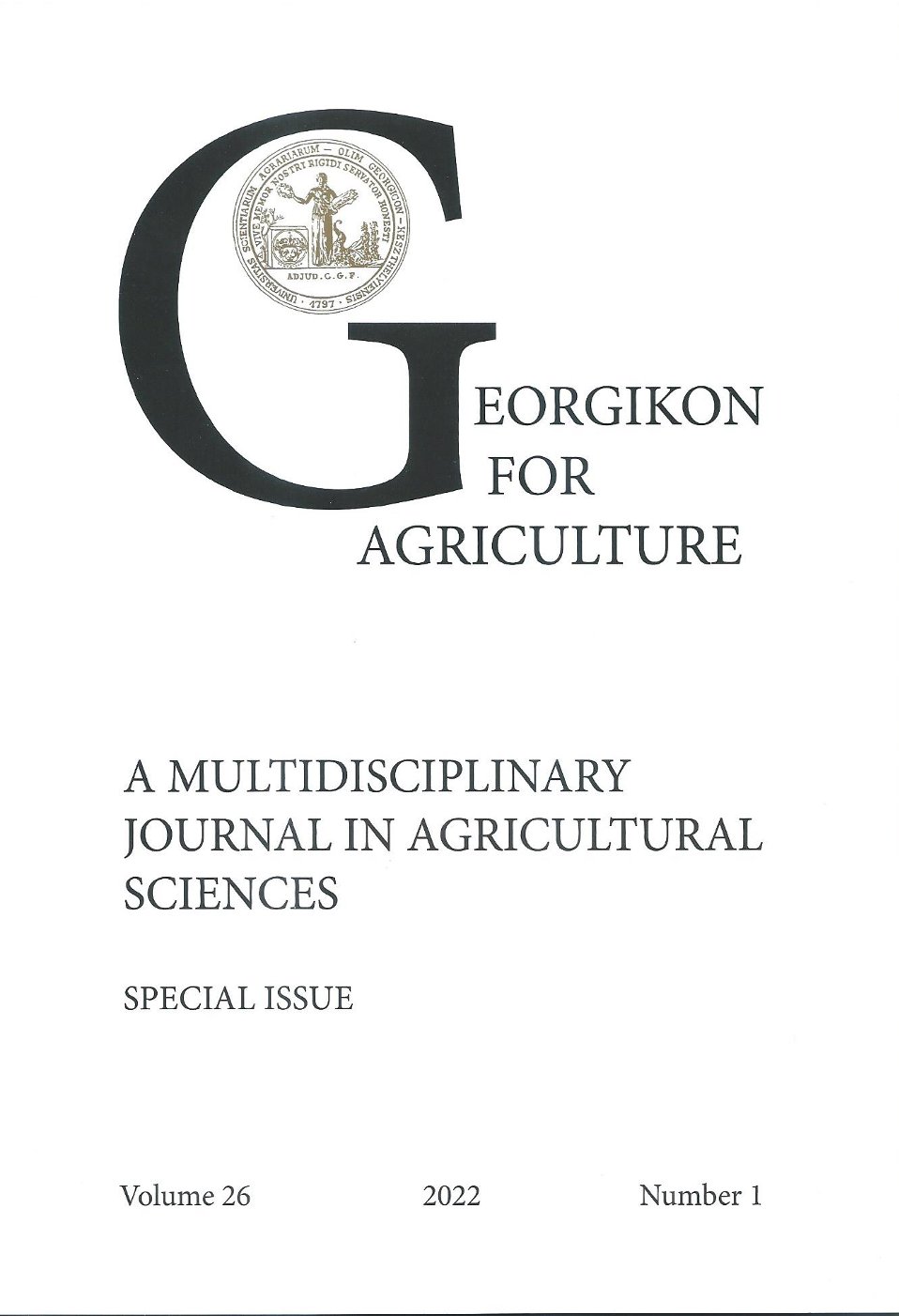The potential impact of flower infecting botrytis bud rot (Botrytis cinerea pers.) on hemp (Cannabis sativa L.) selective breeding
Keywords:
hemp breeding, Botrytis cinereaAbstract
The aim of this paper is to examine the possible adverse phytopathological effects of the selection of hemp (Cannabis sativa L.) plants with altered inflorescence morphological characteristics. We have created the conditions for an accelerated method to judge the offspring of our hemp crosses. The late-autumn growing environment requires additional heating and ventilation. Despite all those controlled environmental conditions the incidence of flower bud rot increased. The application of fungicides is not recommended during breeding as it has a detrimental effect on the selection processes. Fungicides against flower and storage diseases at later stages can not be used in the final product either, due to food health regulations. So in case of our available plant material for variety production the expected rate of fungal infection was evaluated in a greenhouse environment. A preliminary study was conducted to assess the extent of natural resistance to artificial infection. We attempted to examine the critical plant phenological stages. No bud rot resistant individuals were found in our plant stock, although the severity of symptoms was very different.
References
Balthazar, C., Cantin, G., Novinscak, A., Joly, D.L. and Filion, M. 2020. Expression of putative defense responses in cannabis primed by pseudomonas and/or bacillus strains and infected by Botrytis cinerea. Front. Plant Sci. 11. 572112.
Bika, R., Baysal-Gurel, F. and Jennings, C. 2021. Botrytis cinerea management in ornamental production: a continuous battle. Can. J. Plant Pathol. 43(3). 345-365.
Garfinkel, A.R. 2020. Three Botrytis species found causing gray mold on industrial hemp (Cannabis sativa) in Oregon. Plant Dis. 104. 2026.
Garfinkel, A.R. 2021. The history of Botrytis taxonomy, the rise of phylogenetics, and the implications for species recognition. Phytopathology. 111. 437–454.
McPartland, J.M., Clarke, R.C. and Watson, D.P. 2000. Hemp diseases and pest management and biological control. Trowbridge (UK): CABI
Punja, Z.K. 2018. Flower and foliage-infecting pathogens of marijuana (Cannabis sativa L.) plants. Canadian Journal of Plant Pathology. 40(4). 514-527.
Punja, Z.K. and Ni, L. 2021. The bud rot pathogens infecting cannabis (Cannabis sativa L., marijuana) inflorescences: symptomology, species identification, pathogenicity and biological control. Canadian Journal of Plant Pathology. doi: https://10.1080/07060661.2021.1936650
Punja, Z.K., Collyer, D., Scott, C., Lung, S., Holmes, J. and Sutton, D. 2019. Pathogens and molds affecting production and quality of Cannabis sativa l. Front. Plant Sci. 10. 1120.
Ren, G., Zhang, X., Li, Y., Ridout, K., Serrano, M., Yang, Y., Liu, A., Ravikanth, G., Nawaz, M., Mumtaz, A., Salamin, N.and Fumagalli, L. 2021. Large-scale whole-genome resequencing unravels the domestication history of Cannabis sativa. Sci. Adv. 29.
Small, E. and Cronquist, A. 1976. A Practical and Natural Taxonomy for Cannabis. Taxon. 25. 405–435.
Van Kan, J. A. 2006. Licensed to kill: the lifestyle of a necrotrophic plant pathogen. Trends Plant Sci. 11. 247–253.
Vergara, D., Baker, H., Clancy, K., Keepers, K. G., Mendieta, J. P. and Pauli, C. S. 2016. Genetic and genomic tools for Cannabis sativa. Crit. Rev. Plant Sci. 35. 364–377.
Published
Issue
Section
License
Copyright (c) 2022 Somody Gergő, Aranyi Nikolett Réka

This work is licensed under a Creative Commons Attribution-NonCommercial-NoDerivatives 4.0 International License.
Cikkre a Creative Commons 4.0 standard licenc alábbi típusa vonatkozik: CC-BY-NC-ND-4.0. Ennek értelmében a mű szabadon másolható, terjeszthető, bemutatható és előadható, azonban nem használható fel kereskedelmi célokra (NC), továbbá nem módosítható és nem készíthető belőle átdolgozás, származékos mű (ND). A licenc alapján a szerző vagy a jogosult által meghatározott módon fel kell tüntetni a szerző nevét és a szerzői mű címét (BY).




